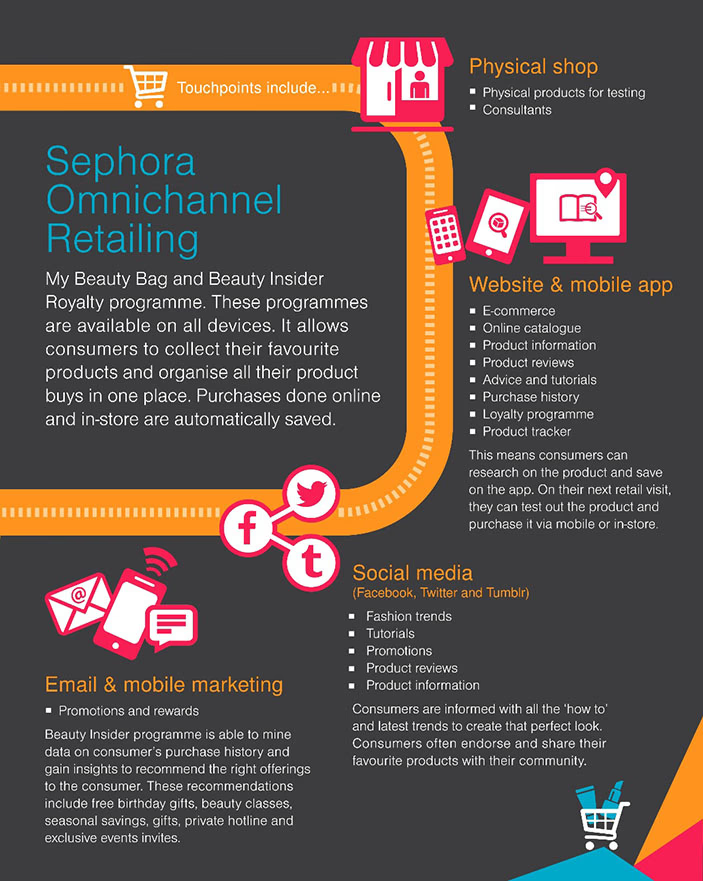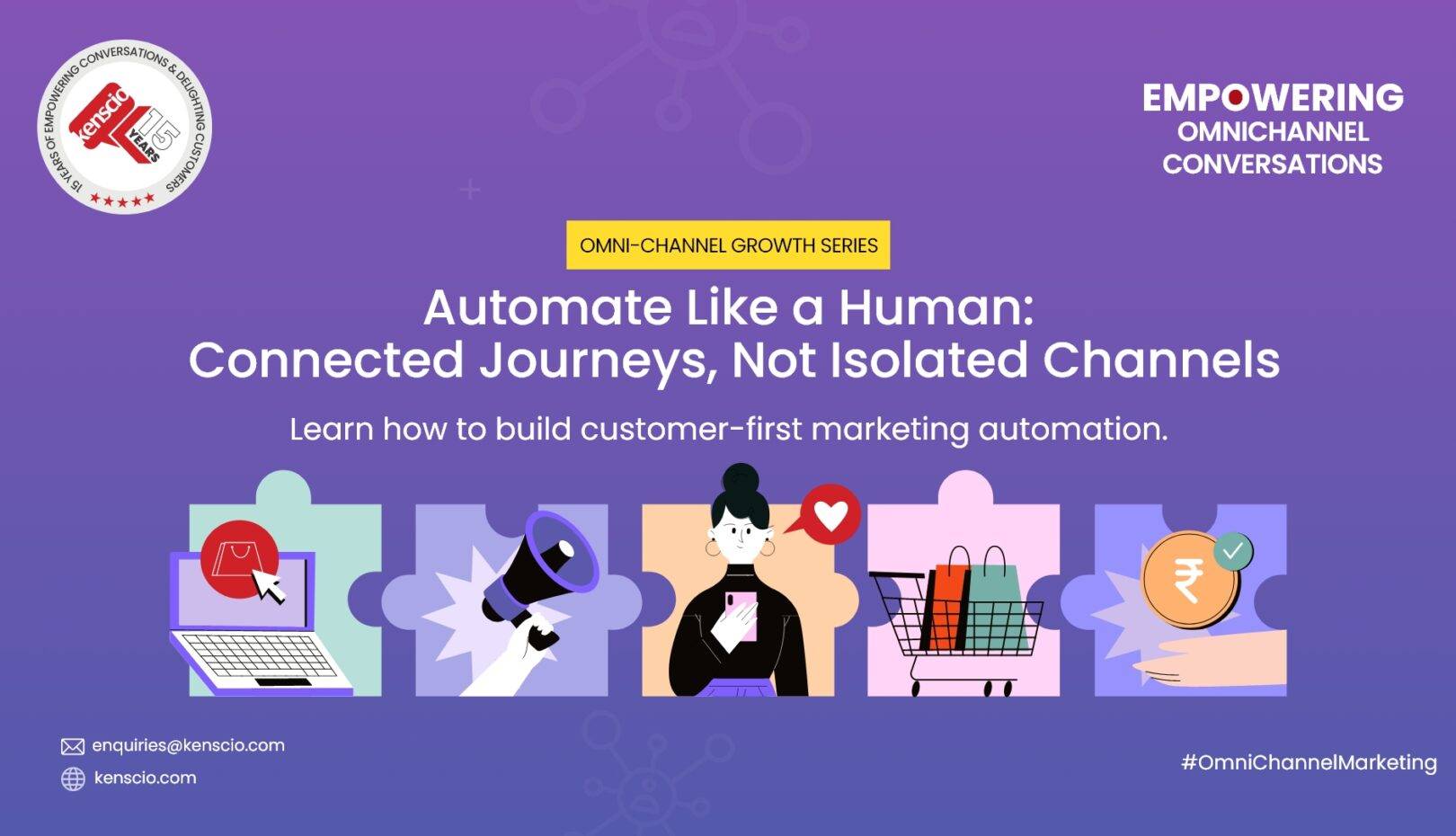- May 19, 2025
- by Parbeshkumar Maurya
Automate Omni-Channel Marketing Like a Human Without Creating Silos | Omni-Channel Growth Series Blog 4
Let’s paint a common picture. A customer browses a product on your website. They get an abandoned cart email—great! Then, two hours later, they get a push notification suggesting a totally different, unrelated product.
Meanwhile, your SMS team, working separately, sends a discount code — but not for the product they were actually considering.
Instead of feeling known, the customer feels confused. Frustrated. Bombarded.
This is what happens when automation creates silos instead of building cohesive journeys.
In Blog 4 of our Growlytics Omni-Channel Series, we’ll talk about how to automate marketing across multiple channels—email, SMS, push, and in-app—without losing the personal, connected feeling customers crave.
The Problem: Automation Can Amplify Silos if You're Not Careful
Automation promised marketers freedom: smarter campaigns, faster execution, real-time responsiveness. But somewhere along the way, automation also created…chaos.
Different teams running different automation workflows.
Different platforms managing different parts of the customer experience.
Different metrics tracked in different dashboards.
According to Gartner, 58% of marketers struggle to integrate automation across multiple channels, leading to inconsistent messaging and missed opportunities.
Without integration, each automated campaign starts behaving like its own little island — with no bridge connecting it to the bigger customer journey.
Automation isn’t the enemy. Siloed automation is.
The Solution: Automate Across Channels — Around the Customer, Not the Channel
The best Omni-Channel brands don’t think in terms of “email campaigns”, “SMS campaigns”, or “push campaigns”.
They think about customer moments—and automate the right touchpoint for the right moment.
Real-world example: Sephora's Seamless Automation
When a Sephora customer browses a product online, here’s how automation works behind the scenes:
- If they abandon their cart, an email reminder triggers first.
- If there’s no action within 12 hours, a push notification with a reminder or review appears.
- If they still don’t purchase within 24 hours, an SMS follows offering a free sample with purchase.
- If they return to the app, an in-app promotion is ready to greet them.
No matter which message they act on, the other channels pause automatically.
Result? Sephora improved cart recovery by 21%.
Automation should behave like a conversation, not a megaphone.

How to Automate Omni-Channel Marketing Without Creating Silos
Here’s how smart brands automate across channels without fragmenting the experience:
1️⃣ Start with a Unified Customer View
You can’t automate around the customer if you’re looking at disconnected data.
Invest in a Customer Data Platform (CDP) or CRM that brings in data from:
- Website browsing behavior
- Mobile app actions
- Email engagement
- SMS interactions
- POS (in-store) transactions
When all customer activity flows into one place, you can trigger automations based on full behavior, not partial guesses.
2️⃣ Build Journeys, Not Campaigns
Stop thinking about isolated “campaigns.” Start thinking about customer journeys. Ask:
- What should happen if they browse but don’t buy?
- What should happen after they download the app?
- What should happen after a loyalty purchase?
Then orchestrate automated touchpoints across multiple channels — based on behavioral triggers — not based on channel managers pushing their own goals.
Example: Instead of blasting a “15% off everything” email, trigger a push notification offering a discount only if a customer leaves a cart abandoned.
3️⃣ Coordinate Triggers Across Channels
Here’s a rule: One behavior = One coordinated response.
If a customer abandons a cart, don’t send three emails, two push notifications, and an SMS all screaming about it.
Plan smart trigger flows like:
- Day 0: Email reminder
- Day 1: Push notification nudge (if no response)
- Day 2: SMS exclusive offer (only if still no action)
Each message should feel like a next chapter, not a broken record.
4️⃣ Personalize Timing, Message, and Channel
Don’t treat everyone the same. Let behavior and preferences dictate:
- What channel they prefer (some like SMS, others prefer email).
- What timing works best (instant follow-up vs. gentle reminder later).
- What content resonates (discounts, testimonials, loyalty rewards).
AI-powered automation can help segment customers dynamically and trigger hyper-personalized flows.
Automation Done Right: It Should Feel Invisible, Not Robotic
When automation is invisible, it feels human.
When automation is lazy, it feels like spam.
Customers shouldn’t be able to tell if a machine sent them that push notification, or if a human thought about their experience and acted accordingly.
Great automation feels like the brand was just paying attention.
And in the Omni-Channel world, attention = loyalty.
Conclusion: Smart Automation Creates Conversations, Not Confusion
Automation is the future—but only if it’s coordinated, customer-centered, and humanized.
To automate without silos:
✅ Centralize your customer data.
✅ Think journeys, not campaigns.
✅ Orchestrate triggers smartly across channels.
✅ Personalize deeply based on real behavior.
Your customers are ready for seamless, human engagement at scale. Are you ready to deliver it?
Want to Automate Seamlessly Without Losing Control
Next Up in the Series:
Blog 5: Beyond Email — Integrating SMS, Push, and In-App for Seamless Engagement
📖 Stay tuned — because Omni-Channel engagement only works if every message feels like it came from the same trusted brand.
